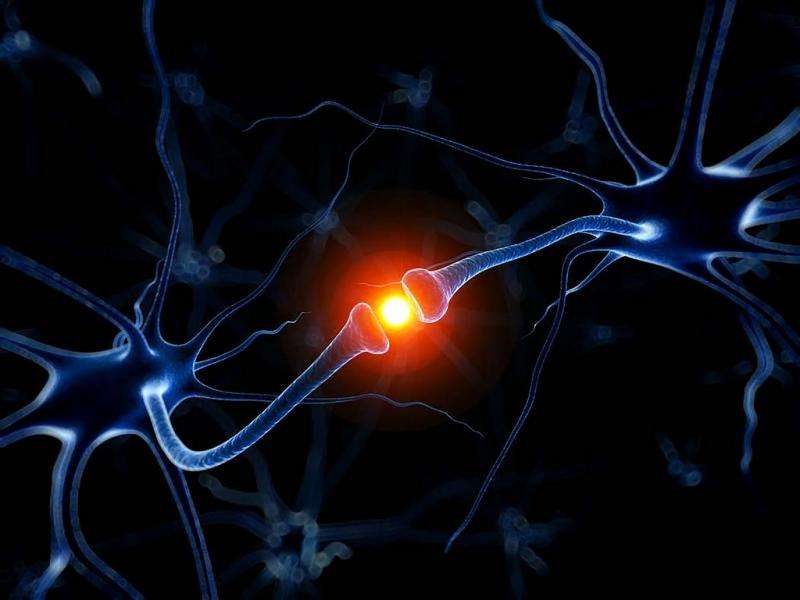Neurons. Credit: Investigación y Desarrollo
Working with animal models, Mexican researchers have crossed the electroencephalic barrier, introduced a nanogel to brain tissue and achieved the growth of neurons within the gel, demonstrating a technique to promote regeneration of brain tissue.
After six years of research with materials engineering and bioengineering, the first nanogel for neuron growthhas reached the experimental stage and could be applied as a treatment for neurodegenerative diseases such as Alzheimer's and Parkinson's, in addition to its use during nuclear magnetic resonance or CAT scans to improve the visibility of the brain.
Dr. Victor Castaño, from the Centre of Applied Physics and Advanced Technology (CFATA) of the National University of Mexico (UNAM) explained that the nanogel is a biocompatible material that can be injected into the brain and through external excitation promotes the spontaneous growth of neurons.
"We wanted to improve and advance the generation of biomaterials for regenerating brain tissue. During the experiments, we crossed the electroencephalic barrier that keeps the brain isolated from the body; by crossing it, we could introduce the nanogel, which then acted without harming the body. Within the gel, neurons began to grow; this wouldn't have been possible in any other way.
"Also, with the help of lase tweezers, we took two light phases and stimulated the neuron by pulling it and putting it to exercise. This gave us favorable results in increased neuronal tissue," explained Dr. Castaño, member of the Commission of Biomedical Specialty, from the Engineering Academy of Mexico (AIM).
The Ministry of Health reports that in Mexico more than 500 thousand people suffer from Parkinson's and 850 thousand from Alzheimer's, both neurodegenerative diseases that damage brain nerves.
Provided by Investigación y Desarrollo





















